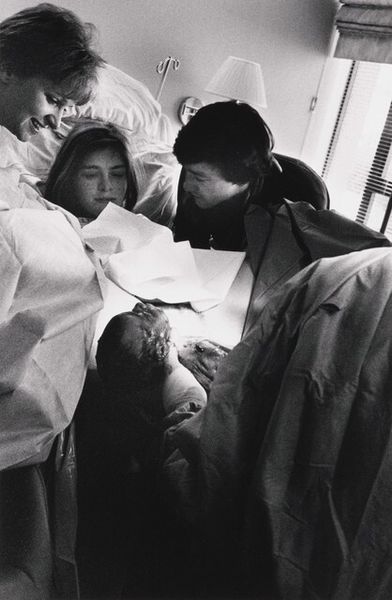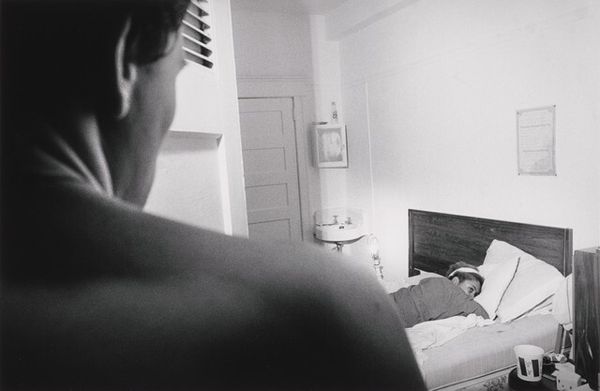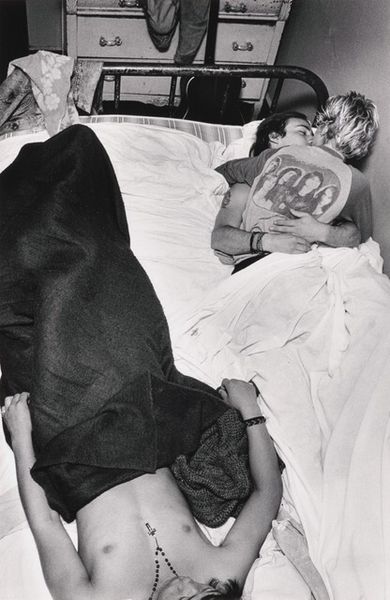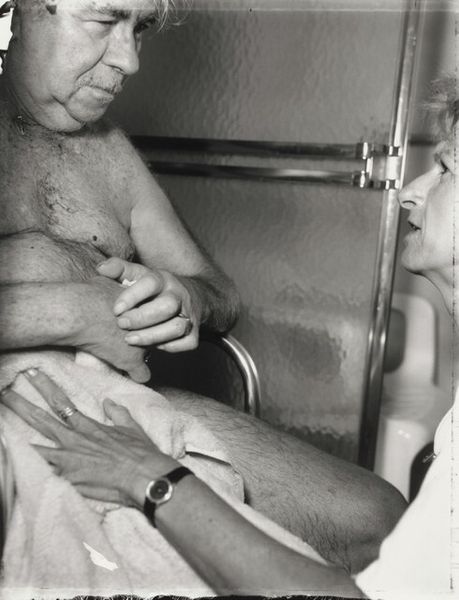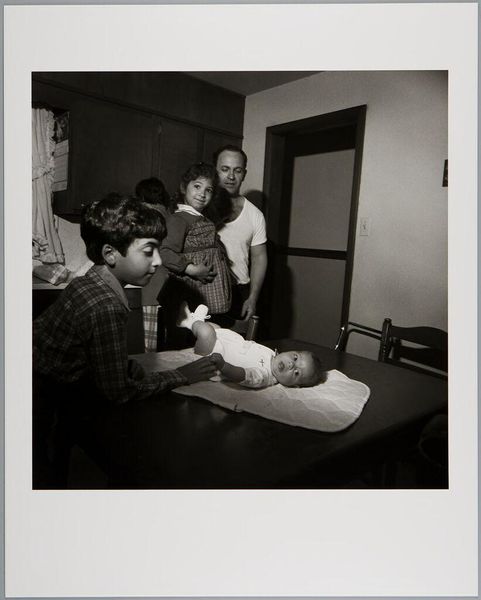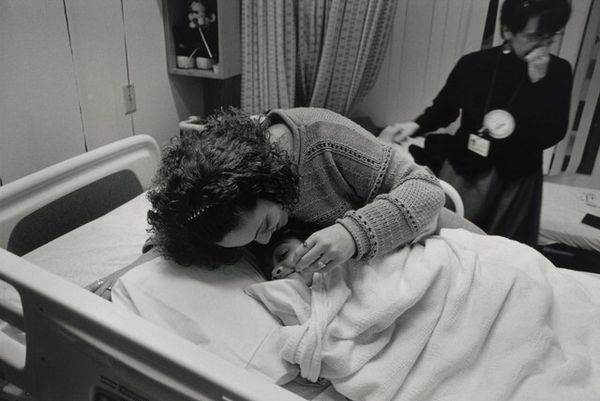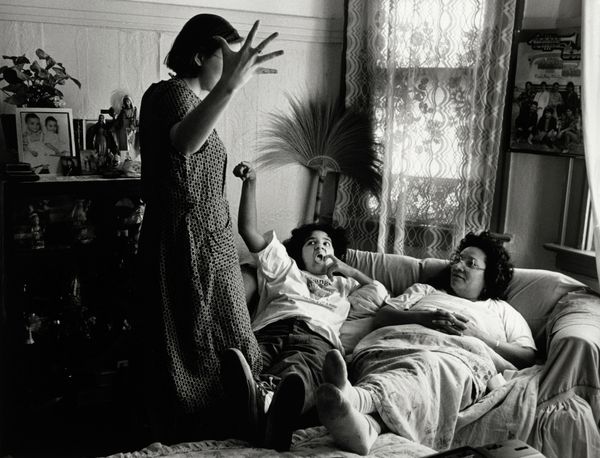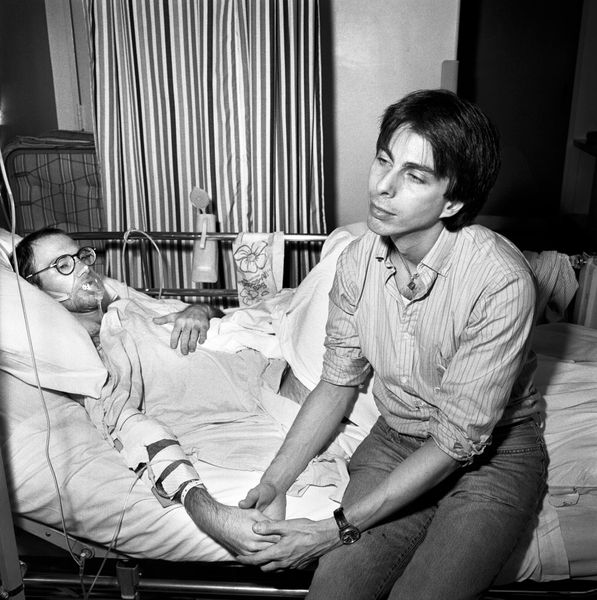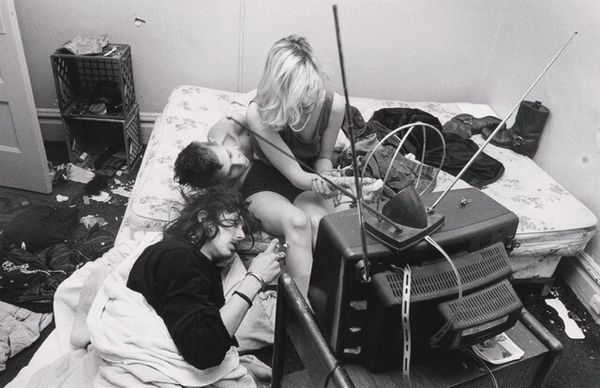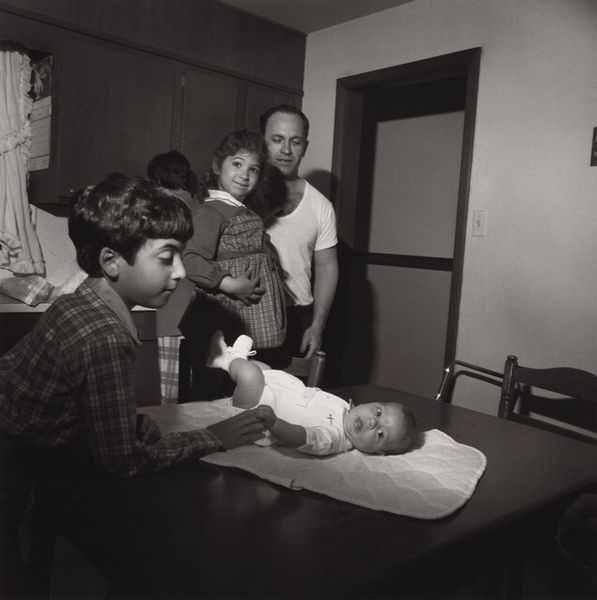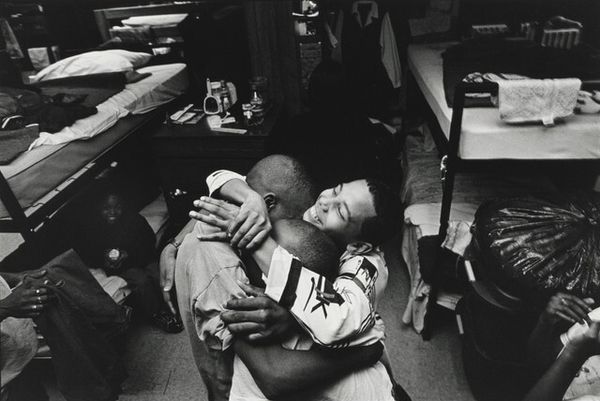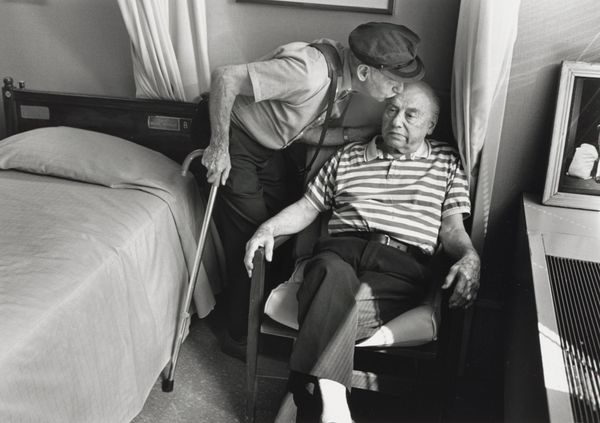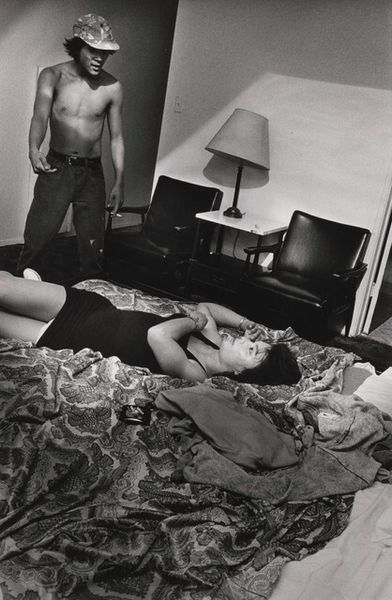
photography, gelatin-silver-print
#
portrait
#
black and white photography
#
black and white format
#
photography
#
black and white
#
gelatin-silver-print
#
monochrome photography
#
monochrome
#
exhibition
Dimensions: sheet: 27.6 × 35.4 cm (10 7/8 × 13 15/16 in.) image: 20.4 × 32.3 cm (8 1/16 × 12 11/16 in.)
Copyright: National Gallery of Art: CC0 1.0
Curator: This gelatin-silver print, tentatively dated between 1989 and 1994, is titled "Slamming Alcohol" by Jim Goldberg. It's stark. The black and white emphasizes the grit, the almost desperate energy of the figures. Editor: It is definitely arresting, creating a feeling of claustrophobia and anxiety. You're drawn right into this intimate scene, and yet there's a barrier, a sense of not truly being able to access their lived experiences. Curator: The image foregrounds material vulnerability – track marks on arms, needles in hand. Consider the physical cost, the labor involved in maintaining addiction. It speaks volumes about societal neglect and the limited access these individuals have to healthcare and support structures. Goldberg's choices of medium and the print's accessibility also speak to art world assumptions of artistic 'value'. Editor: I think the photograph operates as a document of social reality, doesn’t it? Goldberg's work consistently seeks to expose the underbelly of society, challenging mainstream narratives. How does it impact viewers confronted with this image? Does it invite empathy, or perpetuate existing prejudices? Curator: Absolutely, there’s the ethics of representation here. He makes visible that which society prefers to ignore – consider the cultural perception of substance abuse and the demonization that follows; consider its role in perpetuating systems of oppression, denying addicts essential resources by denying them common humanity. Goldberg deliberately uses handwritten annotations to give the subject a level of authorship over the work. Editor: His choice to leave the image undated, as well, strikes me as a deliberate effort to contextualize it as both situated and timeless. In so doing, I would argue that the photograph is now a haunting historical record of a specific epidemic—as well as of wider, continuous, and systematic forces which determine a given person’s proximity to the conditions for addiction and its cycles. Curator: So the physical production, in this instance – a photographic print - is intimately linked to socio-political power relations and labor, isn't it? Editor: Undeniably, a harsh reflection on how societal structures and institutional failures shape individual lives. Curator: Agreed, and as viewers, we have to actively unpack the discomfort and implications it provokes.
Comments
No comments
Be the first to comment and join the conversation on the ultimate creative platform.

